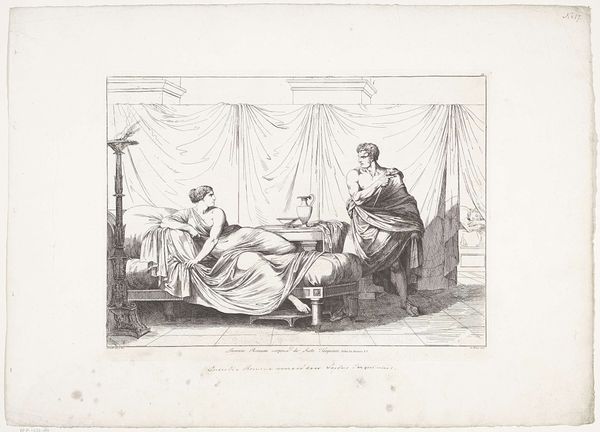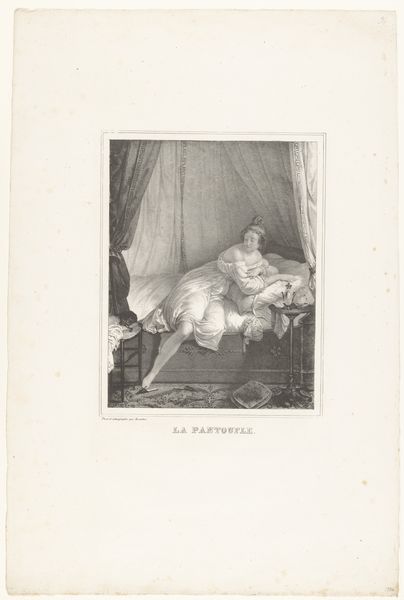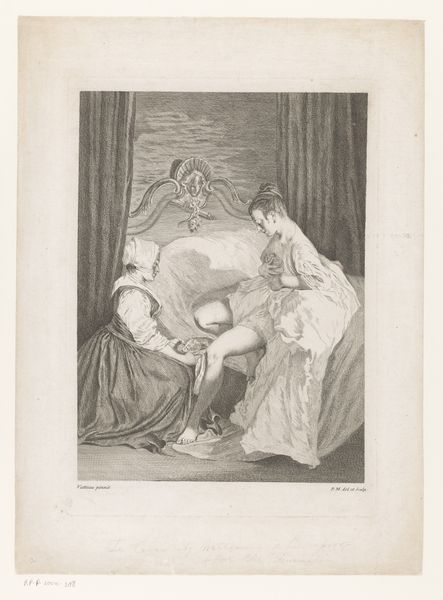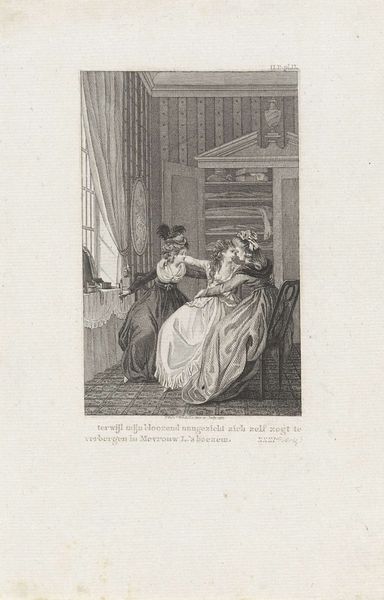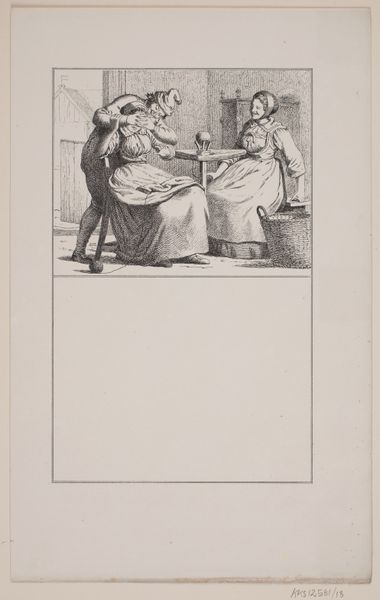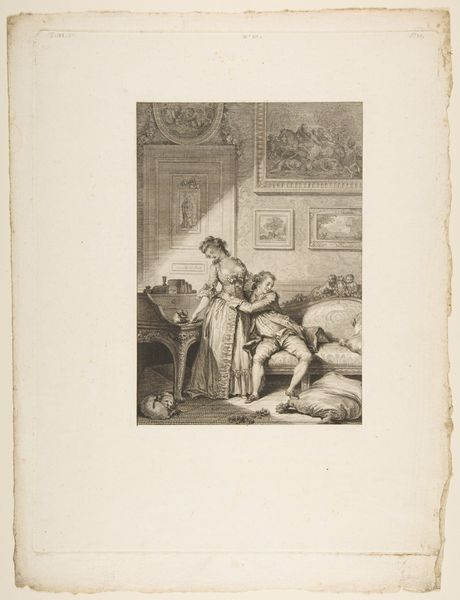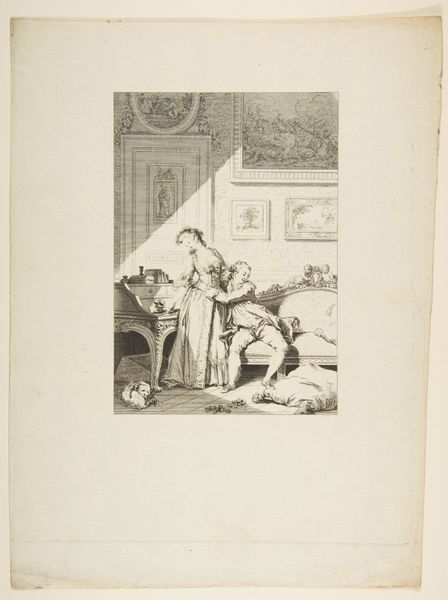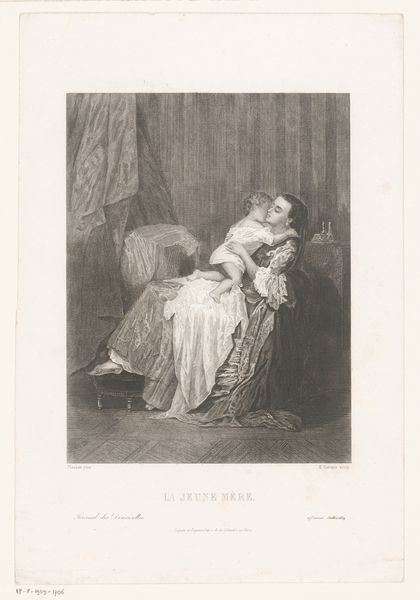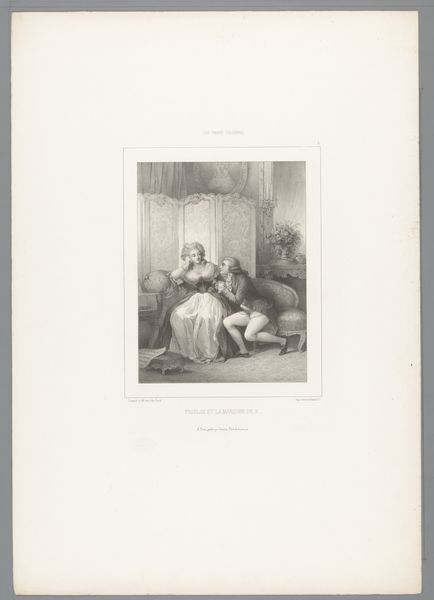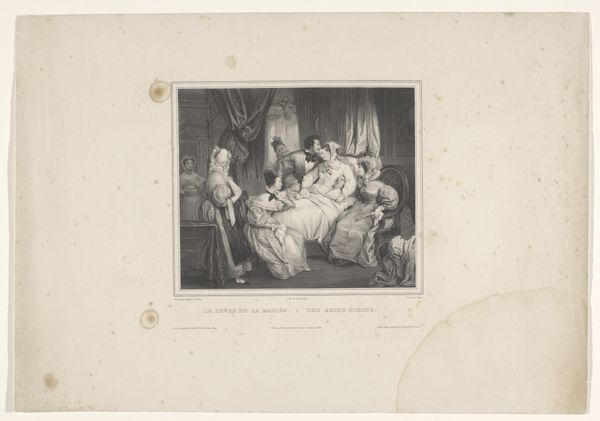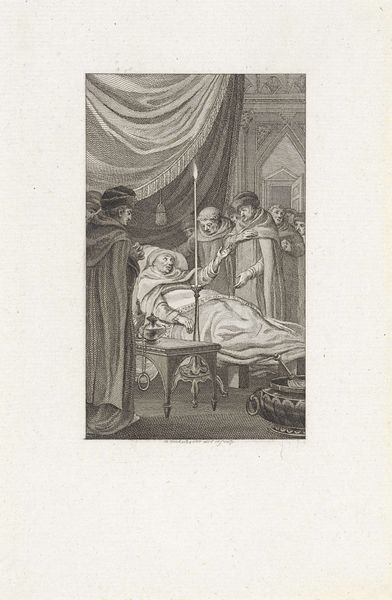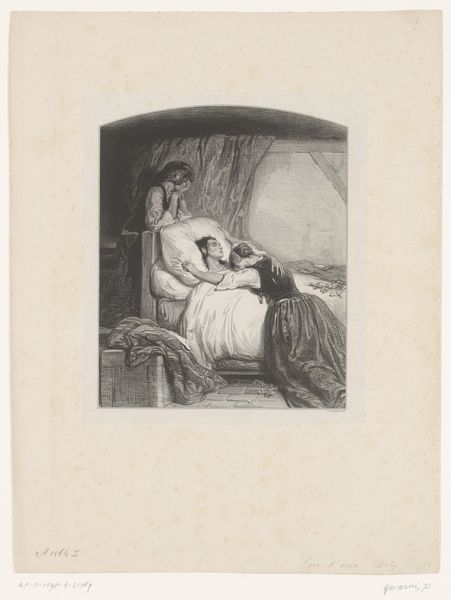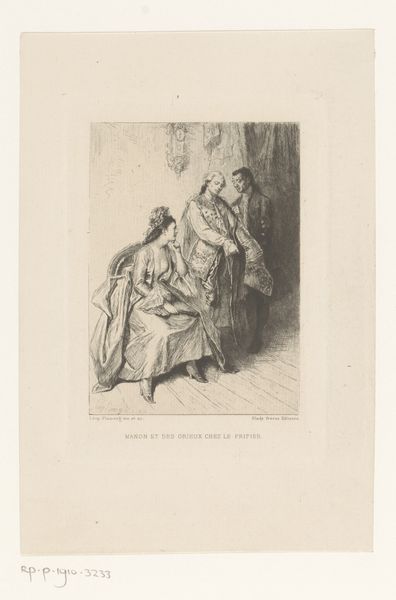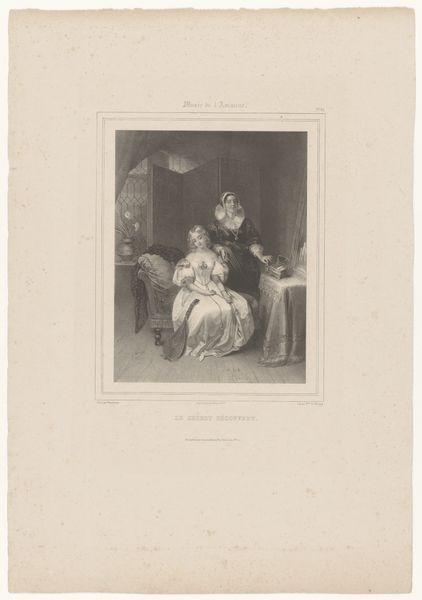
print, engraving
#
pencil drawn
# print
#
old engraving style
#
romanticism
#
nude
#
engraving
#
erotic-art
Dimensions: height 546 mm, width 359 mm
Copyright: Rijks Museum: Open Domain
Editor: This is “Vrouw in bed met een hoofdkapje om haar voet,” or “Woman in Bed with a Bonnet on Her Foot," created in 1831 by Mathieu Barathier, using engraving techniques to make a print. The textures achieved through the engraving are remarkable; it really brings out the sumptuousness of the fabrics. What's your take on this piece? Curator: Consider the materials, Editor. This isn't just an image; it's an object born from specific tools, labor, and economic structures. Look at the paper, the ink, the plate. Each carries its own history. The mass production of prints democratized images, allowing for wider consumption and impacting the social understanding of art itself. What does the choice of this specific medium tell us about its intended audience and its function within society? Editor: That's fascinating. It shifts my perspective entirely! I hadn't considered it as an object with a whole network of creation and distribution. Curator: Exactly! And the subject matter, the intimate boudoir scene. How does this connect to broader social dialogues concerning class, gender, and labor in the 19th century? Who is producing these textiles, where, and under what conditions? Is this scene critiquing or celebrating a certain level of luxury? Editor: So it's not just about the beautiful woman, but the whole system that enables that image and that lifestyle to exist. It almost feels critical now, thinking about where the materials come from and the hands that crafted them. Curator: Precisely. By dissecting the material processes and social context, we uncover deeper layers of meaning, challenging traditional boundaries between aesthetics and the realities of production and consumption. Editor: That gives me so much to think about. I see how this work goes far beyond just aesthetics, to highlight the materials and the socioeconomic landscape in the 1830s. Thanks! Curator: Indeed. Looking at the tangible history embedded within the materials offers new ways of understanding the power relations reflected in the image.
Comments
No comments
Be the first to comment and join the conversation on the ultimate creative platform.
